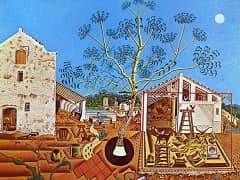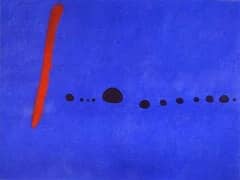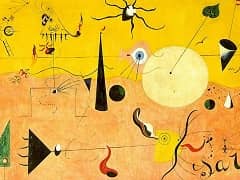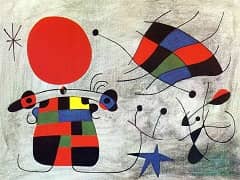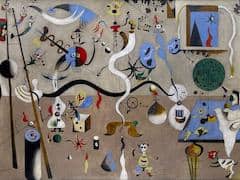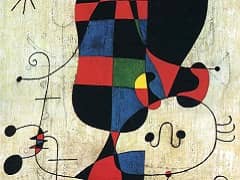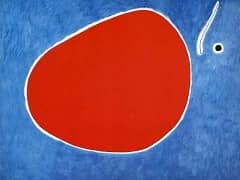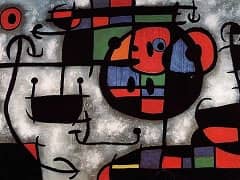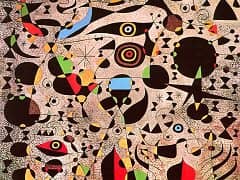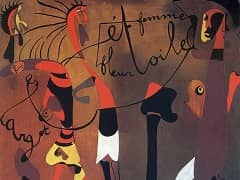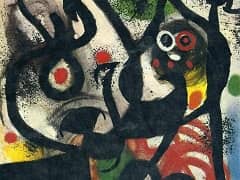Dog Barking at the Moon, 1926 by Joan Miro
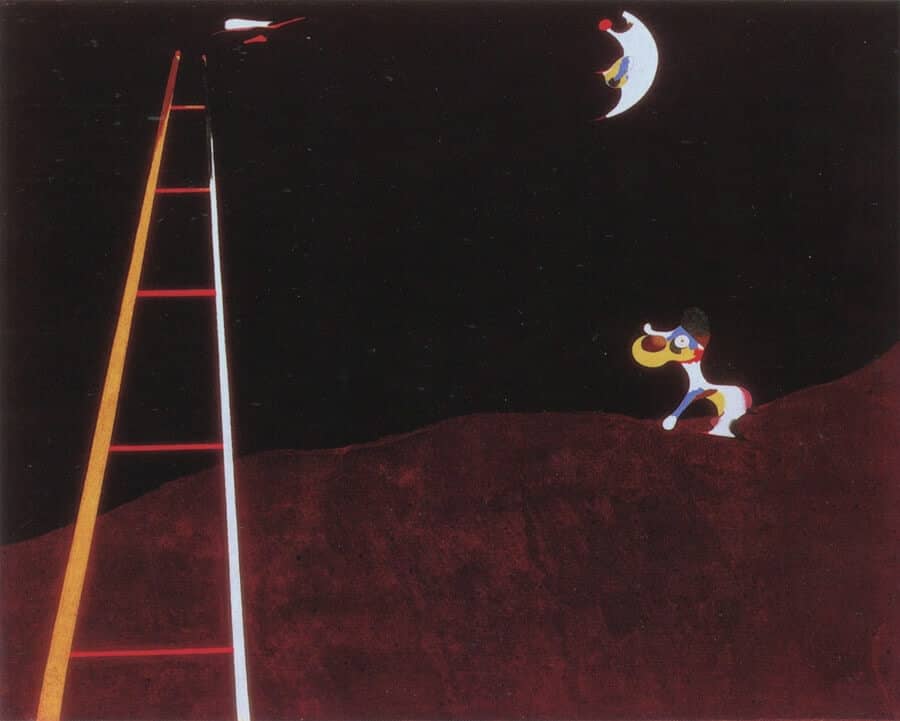
From 1925 to 1928, under the influence of the Dadaists, Surrealists, and Paul Klee, Miro painted "dream pictures" and "imaginary landscapes" in which the linear configurations and
patches of colour look almost as though they were set down randomly, as in The Policeman (1925). In paintings such as Dog Barking at the Moon, he rendered figures of animals and humans as
indeterminate forms. Miro signed the manifesto of the Surrealist movement in 1924, and the members of the group respected him for the way he portrayed the realm of unconscious experience. The poet
Andre Breton, the chief spokesman of Surrealism, stated that Miro was "the most Surrealist of us all."
In this sparse landscape, a ladder reaches up toward the black night sky. Nearby, a colorful dog stands on the brown earth, looking up to the half moon and bird above him. The bright colors and humorous subject matter create a fun,
playful mood. The title of the painting, Dog Barking at the Moon, adds to this lighthearted feeling. However, the dark background and the vast empty spaces between the dog, ladder, and moon also produce a sense of loneliness
and mystery.
Although he spent each winter in Paris, Joan Miro found inspiration for his art in his home in Catalonia, Spain, where he made sketches on his family farm. He based many of his paintings on these drawings and his memories of the
farm, including this one. In Paris, he was influenced by Surrealist artists and poets, who were inspired by dreams and the unconscious.
While his art was always based on actual places and objects, Miro thought of reality as "a point of departure, never as a stopping place." In Dog Barking at the Moon, he provided a recognizable landscape, but the exact
setting remains unclear. The dog, moon, and bird are also identifiable, but they are distorted. The ladder reaches toward empty space, resting on nothing. The original sketch for the painting included words, with the moon telling
the dog that he does not care about his barking. Miro omitted these words in the final painting, leaving it up to the viewer to imagine the story taking place.

